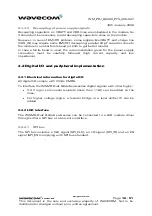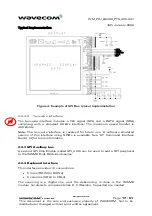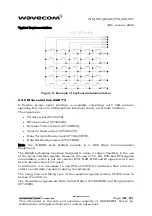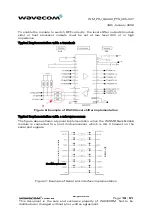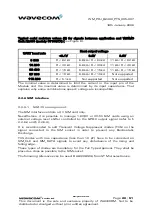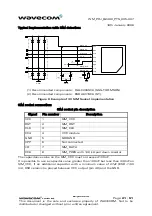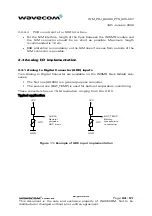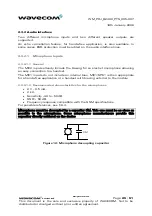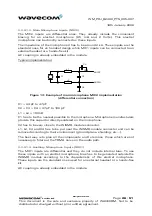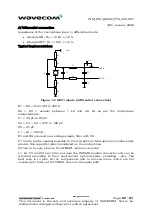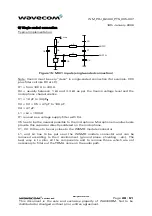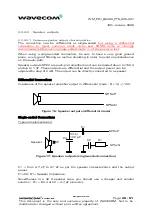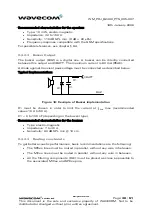
WM_PRJ_Q2400_PTS_005 -007
18th January 2006
Confidential©
All rights reserved
Page:
26
/
51
This document is the sole and exclusive property of WAVECOM. Not to be
distributed or divulged without prior written agreement.
2.3.2.1.3 Main Microphone Inputs (MIC2)
The MIC2 inputs are differential ones. They already include the convenient
biasing for an electret microphone (0.5 mA and 2 Volts). This electret
microphone can be directly connected on these inputs.
The impedance of the microphone 2 has to be around 2 k
Ω
. These inputs are the
standard ones for an handset design while MIC1 inputs can be connected to an
external headset or a hands-free kit.
AC coupling is already embedded in the module.
Typical implementation:
L1
L2
C1
C2
C4
C3
MIC2P
MIC2N
Figure 13: Example of main microphone MIC2 implementation
(differential connection)
C1 = 33 pF to 47 pF
C2 = C3 = C4 = 47 pF to 100 pF
L1 = L2 = 100 nH
C1 has to be the nearest possible to the microphone. Microphone manufacturers
provide this capacitor directly soldered on the microphone.
C2 has to be very close to the WISMO module connector.
L1, L2, C3 and C4 has to be put near the WISMO module connector and can be
removed according to their environment (ground plane, shielding, etc…).
The best way is to plan all the components and to remove those which are not
necessary to filter out the TDMA noise on the audio path.
2.3.2.1.4 Auxiliary Microphone Inputs (MIC1)
The MIC1 inputs are differential and they do not include internal bias. To use
these inputs with an electret microphone, bias has to be generated outside the
WISMO module according to the characteristic of this electret microphone.
These inputs are the standard ones used for an external headset or a hands-free
kit.
AC coupling is already embedded in the module.





